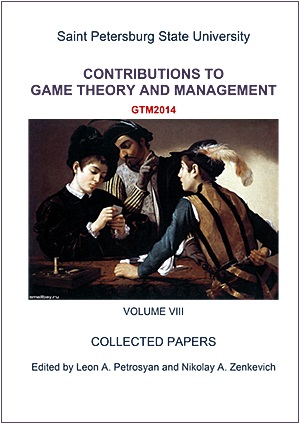On a Large Population Partnership Formation Game with Continuous Time
Abstract
This paper presents a model of partnership formation in which there are two classes of player (called for convenience male and female). There is a continuum of players and n types of male and female. Each player begins searching at time zero and the mating season is of length µ. Each player searches until he/she finds a mutually acceptable prospective partner and then this pair both leave the pool of searchers. Hence, as the season progresses, the proportion of players still searching for a partner decreases and the distribution of types changes appropriately. The rate at which prospective partners are found is a non-decreasing function of the proportion of players still searching. The value of pairing with a type i partner at time t is assumed to be v i e - γt , where γ is the discount rate and v 1 > v 2 >... > v n . At a Nash equilibrium, each searcher accepts a prospective partner if and only if the value obtained from such a partnership (ignoring previously incurred discounts) is greater or equal to the expected value obtained from further search. Some general results are given. In addition, we derive the form of the equilibrium when there are two types and present two examples.
Keywords:
partnership formation, dynamic game, stopping problem, game with a continuum of players
Downloads
References
Downloads
Published
How to Cite
Issue
Section
License
Articles of "Contributions to Game Theory and Management" are open access distributed under the terms of the License Agreement with Saint Petersburg State University, which permits to the authors unrestricted distribution and self-archiving free of charge.




